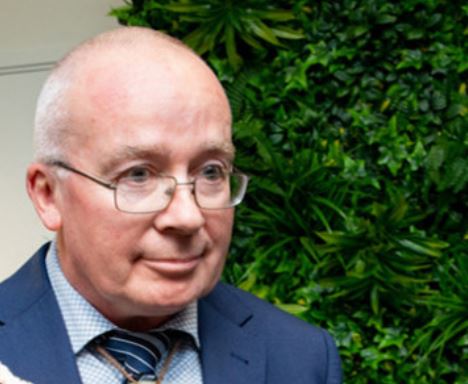
Te Pūkenga Chief Executive Stephen Town Image: tepūkenga.ac.nz
<h2>Recent engagement on Te Pūkenga&#8217;s proposed operating model led to over 1,300 pieces of feedback, which have now been collated and shared with Te Pūkenga Council.</h2>
<p>&#8220;As part of our commitment to share the feedback received, a summary has been released&#8230; alongside an outline of what can be expected from Te Pūkenga in the future &#8211; in 2023, 2026 and in 2027-2033,&#8221; said Te Pūkenga Chief Executive Stephen Town. </p>
<p>&#8220;The proposed Operating Model provides a high-level view of the functions and services required to meet the needs of learners, their whānau and employers &#8211; what we will do, and how we will create that future experience.&#8221;</p>
<p>Town says the feedback received provides valuable insight to inform the future Operating Model and test the thinking that had been done so far.</p>
<p>&#8220;This engagement activity was an important part of the process in developing the final Operating Model and will help to guide future conversations about our regional boundaries and organisational design and structure.&#8221;</p>
<p>&#8220;I want to thank everyone who has contributed to this mahi during what has been challenging and busy time. We can’t do this mahi alone. Through your contributions the voices of learners, our people within the network, iwi, employers and industry have all been heard,&#8221; he says.</p>
<p>Key points from the feedback included:</p>
<p>&#8211; support for the direction of the model and our focus on ensuring learners and their whānau are at the centre of the organisation</p>
<p>&#8211; a desire to strengthen the relationship between Te Tiriti o Waitangi and Te Pūkenga</p>
<p>&#8211; a need to ensure employers of all sizes are well connected and supported</p>
<p>&#8211; a desire to maintain the ability for local management to make innovative decisions that meet the needs of learners, local communities, partners and iwi</p>
<p>&#8211; a need for diverse functions to work closely together to better support the needs of learners</p>
<p>&#8211; a need for flexibility to apply regional context to delivery</p>
<p>&#8211; a need to build staff capability to ensure future equity and inclusion.</p>
<p>&#8220;Many people also shared that they would like to see themselves in the model. This needs to be balanced against the need to reduce the complexity of detail we share,&#8221; Town says.</p>
<p>&#8220;We also heard people want to see how the model will deliver equitable outcomes for Māori and priority learners, and how it will deliver on the expectations set out in our Charter.</p>
<p>&#8220;We’ve taken on board this feedback and look forward to further kōrero in the new year.&#8221;</p>
<p>The Proposed Operating Model <a href="https://xn--tepkenga-szb.ac.nz/assets/OM/Te-Pukenga-Proposed-Operating-Model-Engagement-Report.pdf?vid=3" target="_blank">Engagement Summary Report</a> is available via this link to Te Pūkenga&#8217;s website.</p>

EXCLUSIVE: Teachers used to be paid two to three times more than minimum wage workers,…
After an “overwhelming” vote to reject the latest Government offer, secondary school teachers will begin…
Second-language learning should be compulsory, says a new report from a forum bringing together academics,…
A new entitlement aimed to improve access to learning support coordinators for schools with students…
Educators have raised questions about the Ministry of Education’s new secondary school subjects, set to…
Professional learning and development (PLD) for teachers needs to be higher impact for teachers and…
This website uses cookies.